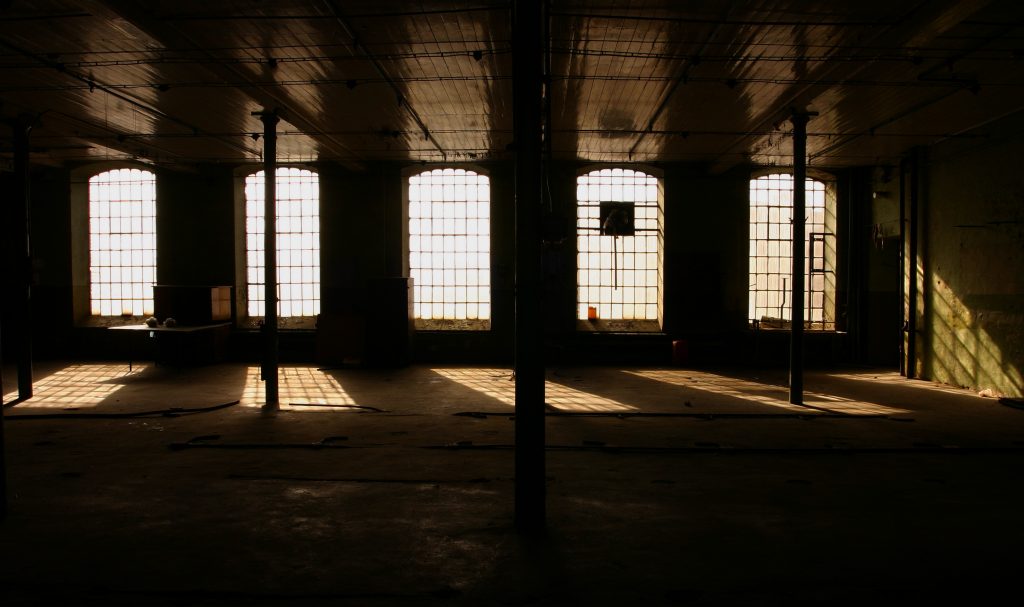 A wrongful death action lawsuit can be difficult for an individual to have to deal with. But what happens when a clerk that stamps the lawsuit stamps a date that does not exist? What do you do when the Clerk makes this error? The Third Circuit Court of Appeal for Louisiana recently addressed the issue.
A wrongful death action lawsuit can be difficult for an individual to have to deal with. But what happens when a clerk that stamps the lawsuit stamps a date that does not exist? What do you do when the Clerk makes this error? The Third Circuit Court of Appeal for Louisiana recently addressed the issue.
Linda Roberts (“Linda”) was diagnosed with bronchiolitis obliterans organizing pneumonia and passed away on July 28th, 2009. Linda’s son, Jeffrey Buelow, (“Jeffrey”) filed a wrongful death lawsuit on August 2nd, 2010, against his stepfather, Donald Roberts (“Donald”). The stamp on the lawsuit showed “10 JUL 33 A:40” and the Clerk wrote “Aug 2” above the stamp. Jeffrey alleged in his lawsuit that Donald wrongfully signed a consent form to withdraw Linda’s life support while under the influence of alcohol because BOOP could have still been cured. In response to the wrongful death suit, Donald filed a peremptory exception of prescription and a document that provided when Linda passed away. A peremptory exception of prescription is a defense by the defendant that the plaintiff’s lawsuit is barred by not being filed within the prescribed period of time. The provided that Linda passed away on July 28th, 2009, and not July 28th, 2010, as Jeffrey stated in his lawsuit. Jeffrey confirmed in his testimony that Linda did in fact pass away on July 28th, 2009, and evidence in form of a certificate of death verified such. Jeffrey then opted to represent himself at trial and argued that the wrongful death lawsuit should have been carried out because tort lawsuits are subject to a prescription of one year from the day that injury or damage occurs. La. C.C. art. 3492. Jeffrey alleged that the wrongful death lawsuit was faxed by his former attorney before July 28th, 2010 but failed to provide any evidence that demonstrated such. The Ninth Judicial District Court granted Donald’s peremptory exception of prescription because Jeffrey failed to file his lawsuit within one year from when Linda passed away. Jeffrey appealed the decision of the District Court.
On appeal, Jeffrey argued that the District Court erred in dismissing his claim his claim based on the evidence that was presented. For prescriptive periods that are one year or more, expiration of the prescription accrues on the day of the last year in which the date of the alleged wrongful death occurred. La. C.C. art. 3456. The Court of Appeal determined that the prescriptive date was July 29th, 2010, pursuant to La. C.C. art. 3456. The Court of Appeal noted that an employee from the clerk’s office obviously had failed to change the date on the stamp, as the non-existing date of July 33rd would have correctly been August 2nd. The Court of Appeal affirmed the District Court’s decision to dismiss Jeffrey’s claim due to the basis of prescription. The Court of Appeal came to this decision because the record from the District Court showed that the date of the filing was August 2nd, 2010 and Jeffrey failed to produce any letter from his previous counsel or a check paid for the filing fee that would have shown that the wrongful death lawsuit was filed within one year from the date that Linda passed away. This case demonstrates the importance of filing lawsuits in a timely manner.
 Louisiana Personal Injury Lawyer Blog
Louisiana Personal Injury Lawyer Blog


 The death of a loved one is always a traumatic experience for family and friends, especially if the death could have been prevented or is at the fault of the hospital. When someone feels as if medical malpractice has occurred, Louisiana has strict guidelines regarding filing a medical malpractice lawsuit and someone unfamiliar with the legal process can easily be confused or frustrated by this complex process. For example, in Louisiana you have one year following a death to file a medical malpractice suit, however, is that filing due at by the close of business at the one year or is the filing due by midnight? The Louisiana Supreme Court recently consolidated two cases that answered such questions on when you have to file a medical malpractice lawsuit.
The death of a loved one is always a traumatic experience for family and friends, especially if the death could have been prevented or is at the fault of the hospital. When someone feels as if medical malpractice has occurred, Louisiana has strict guidelines regarding filing a medical malpractice lawsuit and someone unfamiliar with the legal process can easily be confused or frustrated by this complex process. For example, in Louisiana you have one year following a death to file a medical malpractice suit, however, is that filing due at by the close of business at the one year or is the filing due by midnight? The Louisiana Supreme Court recently consolidated two cases that answered such questions on when you have to file a medical malpractice lawsuit.  Essential to winning any legal case is having a good lawyer. However, it is even more essential to have a good lawyer when dealing with tricky cases of negligence against the local government. An oversight caused Kenneth Rivarde’s lawyer to submit an incomplete affidavit from a key witness resulting in a lost lawsuit against the city of New Orleans. Mr. Rivarde’s wife, Channelda Rivarde, perished in a motor vehicle accident at the intersection of North Rocheblave Street and A.P. Tureaud Boulevard in New Orleans, Louisiana. Her husband, Kenneth Rivarde (“Mr. Rivarde”) sued the City of New Orleans (“City”) claiming that the accident was a result of a high-speed chase when the New Orleans Police Department (“NOPD”) was pursuing a fleeing felon. The accident occurred when the felon ran a stop sign and struck the car Channelda Rivarde was a passenger in. So, what happens if your lawyer submits an incomplete affidavit in a fatal car accident case?
Essential to winning any legal case is having a good lawyer. However, it is even more essential to have a good lawyer when dealing with tricky cases of negligence against the local government. An oversight caused Kenneth Rivarde’s lawyer to submit an incomplete affidavit from a key witness resulting in a lost lawsuit against the city of New Orleans. Mr. Rivarde’s wife, Channelda Rivarde, perished in a motor vehicle accident at the intersection of North Rocheblave Street and A.P. Tureaud Boulevard in New Orleans, Louisiana. Her husband, Kenneth Rivarde (“Mr. Rivarde”) sued the City of New Orleans (“City”) claiming that the accident was a result of a high-speed chase when the New Orleans Police Department (“NOPD”) was pursuing a fleeing felon. The accident occurred when the felon ran a stop sign and struck the car Channelda Rivarde was a passenger in. So, what happens if your lawyer submits an incomplete affidavit in a fatal car accident case? Most Louisiana residents understand the liability they may incur if they do not properly fence a backyard pool. But what about other, less obvious drowning hazards, such as a church’s baptismal pool? Who is held accountable for the failure to protect children from falling in? Typically, a church is part of a diocese and must meet the general guidelines established by the diocese in order to maintain its affiliation. For instance, the First Assembly Church of God (“First Assembly”) in Ruston, Louisiana is affiliated with the Louisiana District Council of the Assemblies of God (the “DC”) and the General Council of the Assemblies of God (the “GC”). After a tragic accident involving the toddler of a First Assembly family, Louisiana’s Second Circuit Court of Appeal was called upon to determine whether the DC and the GC had sufficient control over First Assembly to be liable for the church’s negligence.
Most Louisiana residents understand the liability they may incur if they do not properly fence a backyard pool. But what about other, less obvious drowning hazards, such as a church’s baptismal pool? Who is held accountable for the failure to protect children from falling in? Typically, a church is part of a diocese and must meet the general guidelines established by the diocese in order to maintain its affiliation. For instance, the First Assembly Church of God (“First Assembly”) in Ruston, Louisiana is affiliated with the Louisiana District Council of the Assemblies of God (the “DC”) and the General Council of the Assemblies of God (the “GC”). After a tragic accident involving the toddler of a First Assembly family, Louisiana’s Second Circuit Court of Appeal was called upon to determine whether the DC and the GC had sufficient control over First Assembly to be liable for the church’s negligence. Accidents involving children are difficult for everyone involved. When the accident results in extensive, life-changing injuries, the situation becomes even more tragic and often results in multiple lawsuits. A person cannot recover damages unless he or she has a recognized claim to do so under law. This concept is known as “standing.” Calvernia Reed, maternal aunt to an injured minor child, Geneva Marie Fils, got a glimpse into how strictly Louisiana courts construe that standing requirement.
Accidents involving children are difficult for everyone involved. When the accident results in extensive, life-changing injuries, the situation becomes even more tragic and often results in multiple lawsuits. A person cannot recover damages unless he or she has a recognized claim to do so under law. This concept is known as “standing.” Calvernia Reed, maternal aunt to an injured minor child, Geneva Marie Fils, got a glimpse into how strictly Louisiana courts construe that standing requirement.  For a plaintiff to prove a negligence case, he or she must prove, among other things, that the defendant owed a legal duty to the plaintiff. See
For a plaintiff to prove a negligence case, he or she must prove, among other things, that the defendant owed a legal duty to the plaintiff. See  Because of the highly technical aspect of seeking relief from the court system, someone unfamiliar with the legal process can be confused and frustrated by the litigation process. This circumstance can be intensified by the harm done and the matter being litigated. Mr. William Matthews, the surviving husband of Mrs. Geranda Matthews, faced this exact problem when filing a medical malpractice claim against two of his wife’s physicians and Louisiana State University Health Systems.
Because of the highly technical aspect of seeking relief from the court system, someone unfamiliar with the legal process can be confused and frustrated by the litigation process. This circumstance can be intensified by the harm done and the matter being litigated. Mr. William Matthews, the surviving husband of Mrs. Geranda Matthews, faced this exact problem when filing a medical malpractice claim against two of his wife’s physicians and Louisiana State University Health Systems. When someone dies because of another person’s negligence certain individuals can bring a wrongful death lawsuit against the negligent party. Normally, those who may recover under a claim for wrongful death and survival are limited to a certain class of persons. In such cases, the plaintiff can be the surviving spouse, a surviving child, the decedent’s parents, the decedent’s siblings, or the decedent’s grandparents.
When someone dies because of another person’s negligence certain individuals can bring a wrongful death lawsuit against the negligent party. Normally, those who may recover under a claim for wrongful death and survival are limited to a certain class of persons. In such cases, the plaintiff can be the surviving spouse, a surviving child, the decedent’s parents, the decedent’s siblings, or the decedent’s grandparents.  Often, the facts of a lawsuit are unclear. One strategy that lawyers often use to prove their version of events is to use an expert witness to corroborate their side’s story. Expert witnesses are individuals who possess knowledge in a field or area that the average person knows little to nothing about. Frequently, both sides in a lawsuit end up utilizing experts who often times have differing opinions about the facts surrounding the lawsuit. But how does a judge or jury determine which expert is correct? Recently, the Fifth Circuit Court of Appeal for the State of Louisiana addressed these questions in a workers’ compensation case.
Often, the facts of a lawsuit are unclear. One strategy that lawyers often use to prove their version of events is to use an expert witness to corroborate their side’s story. Expert witnesses are individuals who possess knowledge in a field or area that the average person knows little to nothing about. Frequently, both sides in a lawsuit end up utilizing experts who often times have differing opinions about the facts surrounding the lawsuit. But how does a judge or jury determine which expert is correct? Recently, the Fifth Circuit Court of Appeal for the State of Louisiana addressed these questions in a workers’ compensation case. A common tactic of defendants is to attempt to remove a case from state court to Federal Court if there is the slightest indication that such removal might be proper. Depending on the case, however, it may be more advantageous to a plaintiff to keep the case in state court. Without even concerning the merits of the case, a battle ensues costing time and money. In any case, where the Federal Government is even remotely involved, removal will likely be an issue. How can a plaintiff successfully keep their lawsuit in state court when the Federal Government is involved? Recent Louisiana asbestos litigation provides at least one way.
A common tactic of defendants is to attempt to remove a case from state court to Federal Court if there is the slightest indication that such removal might be proper. Depending on the case, however, it may be more advantageous to a plaintiff to keep the case in state court. Without even concerning the merits of the case, a battle ensues costing time and money. In any case, where the Federal Government is even remotely involved, removal will likely be an issue. How can a plaintiff successfully keep their lawsuit in state court when the Federal Government is involved? Recent Louisiana asbestos litigation provides at least one way.